Dry shampoo has become a go-to hair care product for so many of us, but how much do you really know about it? In this blog post, we’re uncovering some surprising facts about this beauty staple. From its unexpected history to tips on using it the right way (and avoiding common mistakes), plus what can happen if you overdo it, we’re here to give you the full scoop.
Whether you’ve been a dry shampoo fan forever or are thinking about trying it out, this article will help you get the most out of that trusty spray can.
Table of Contents
1. The Convenience of Dry Shampoo.

Dry shampoo is a total lifesaver when it comes to quick and easy hair care. Whether you’re rushing out the door, had a late night, or just need a pick-me-up between washes, it’s got your back. A quick spray, a little massage, and boom—your hair looks fresher, feels cleaner, and has more volume. It’s also perfect for traveling since you don’t need water or any extra tools. Basically, it’s a time-saving hero for those moments when a full wash just isn’t an option.
2. The Hidden Dangers of Dry Shampoo.
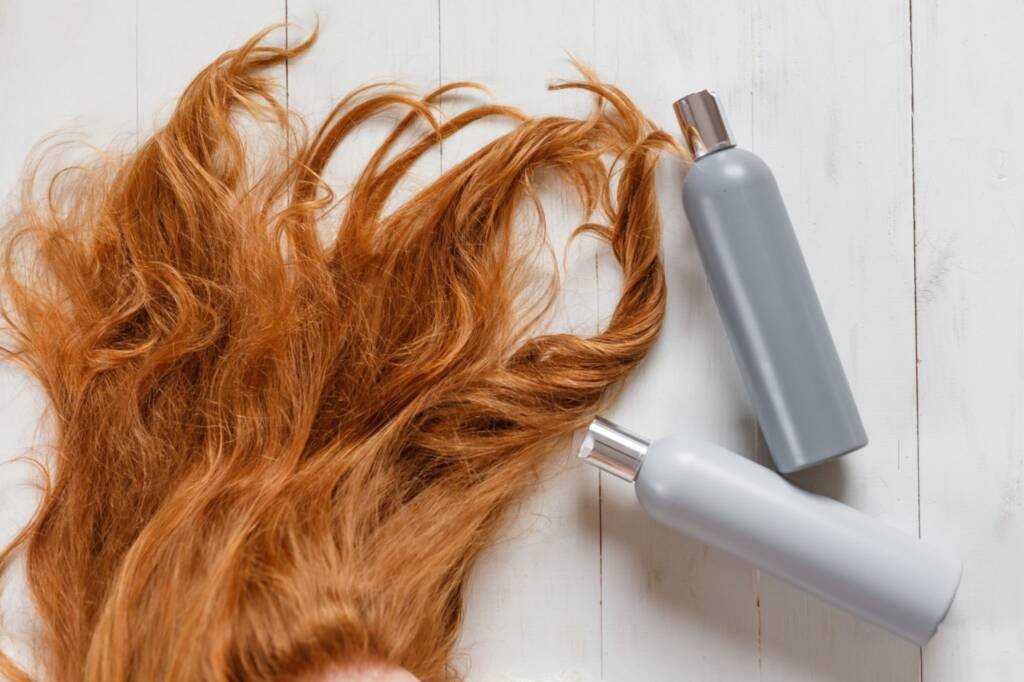
Dry shampoo can be a lifesaver when you’re short on time, but it’s not without its drawbacks. Overusing it or applying it the wrong way can cause product buildup on your scalp, leading to itchiness, dandruff, and, in some cases, even hair loss. It’s also worth remembering that dry shampoo doesn’t actually clean your scalp—it just soaks up excess oil.
If you rely on it too much, your hair might start feeling dull or lose its natural texture since it’s missing out on the nourishment that comes with regular washing. Bottom line? Dry shampoo is great for a quick fix, but make sure you’re using it in moderation and keeping up with your regular wash routine.
3. Analysis of Common Ingredients in Dry Shampoos and Their Effects.

Dry shampoos are made with a mix of ingredients that absorb oil, add a nice scent, and leave your hair feeling fresh. Here’s a quick look at what’s inside:
Starches and Silica.
These two ingredients significantly contribute to the effectiveness of dry shampoos. Starches, often from plants like corn or rice, soak up the oil from your hair and scalp, making it look cleaner and fresher. Silica, a mineral-based ingredient, also absorbs oil and adds a bit of grittiness, which helps give your hair some extra volume.
That said, there are a couple of things to watch out for. Using too much starch-based dry shampoo can leave a white, chalky residue, especially on darker hair. Silica, if overused, can dry out your scalp, causing itchiness or irritation.
Remember, while dry shampoo is excellent for a quick refresh, it doesn’t replace a good, old-fashioned wash. Overusing it can lead to product buildup, so it’s best to use it in moderation!
Alcohol or Propane.
Alcohol and propane are common ingredients in aerosol dry shampoos, acting as the fuel to spray the product onto your hair. While they don’t actually help clean or absorb oil, they’re essential for getting the product out of the can and into your hair.
However, these ingredients aren’t totally harmless. Alcohol can dry out your hair and scalp, especially if you use it often or apply too much. Over time, this can strip your hair’s natural oils, leaving it dry, brittle, and prone to breakage. Propane, on the other hand, is flammable, so you’ll want to keep products containing it away from open flames or high heat.
Also, be mindful of inhaling propane—it can cause dizziness or lightheadedness, and long-term exposure could be harmful. To stay safe, always use aerosol dry shampoos in a well-ventilated space.
Fragrances.
Fragrances in dry shampoos are great for keeping your hair smelling fresh and clean and masking any unpleasant odours. They come in a variety of scents, from light florals and citrus to richer tones like sandalwood or vanilla.
That said, not everyone reacts well to these fragrances. Some people with sensitive skin or allergies might experience irritation, like an itchy or red scalp. In more serious cases, certain fragrances could even cause swelling or hives. Plus, some synthetic fragrances may contain phthalates, chemicals that could have health risks with long-term exposure.
If you have sensitive skin or worry about allergies, it’s a good idea to use fragrance-free dry shampoos or ones that use natural essential oils instead. And remember, less is more—using these products in moderation can help keep your hair and scalp healthy!
Iron Oxides.
Iron oxides are common ingredients in cosmetics, including dry shampoos. They’re naturally occurring minerals often used to add colour to products. In dry shampoos, they help the product blend more seamlessly into the hair, especially for people with darker hair tones.
While iron oxides are generally safe to use on the skin, they can sometimes cause irritation or sensitivity, particularly if you have sensitive skin. Some research also links them to heavy metal toxicity, but this would usually require very high exposure over a long time.
If you ever notice irritation or an unusual reaction after using a product with iron oxides, it’s best to stop using it and consult a healthcare professional.
Talc.
Talc is a natural mineral commonly used in personal care products like dry shampoo because it absorbs oil well. It helps soak up excess oil from hair, leaving it feeling clean and refreshed. Plus, its fine particles can give hair a smooth, soft texture that adds to the product’s appeal.
However, talc does come with some concerns. There’s been ongoing debate about its safety, especially when it comes to health risks. Inhaling talc powder during application could cause respiratory issues, like lung irritation, and potentially more serious long-term damage.
Some studies have also raised questions about a possible link between talc use and an increased risk of ovarian cancer, though the research isn’t conclusive. Another concern is that talc can sometimes be contaminated with asbestos, a known carcinogen. However, cosmetic-grade talc-like what’s used in dry shampoo—is required to be asbestos-free.
Magnesium Stearate.
Magnesium stearate is a mix of magnesium and stearic acid, commonly used in food and cosmetic products, like dry shampoo. It’s a white powder that dissolves in water and works as an anti-caking agent, keeping ingredients from clumping together so they apply smoothly.
While it’s considered safe and even has FDA approval (GRAS status), it’s not entirely risk-free. For some people, magnesium stearate can irritate the skin, causing redness, itching, or a burning sensation—especially for those with sensitive skin.
When using spray products like dry shampoo, there’s also the risk of breathing it in. Inhaling it can lead to coughing, sneezing, or, in more serious cases, trouble breathing.
Denatured Alcohol.
Denatured Alcohol, or Alcohol Denat, is a common ingredient in many personal care products, like dry shampoos. It’s loved for its quick-drying properties and its ability to help blend oil and water-based ingredients seamlessly.
However, it’s worth knowing about the potential downsides. Because it evaporates so quickly, Denatured Alcohol can strip the scalp of its natural oils, which might leave your scalp feeling dry or irritated—especially if you already have sensitive skin or dry hair. It can also weaken your hair over time, making it more prone to breakage or split ends.
Another thing to watch out for is that when you use aerosol products with Denatured Alcohol, like dry shampoo, you might accidentally inhale it. This could cause respiratory irritation, dizziness, or even headaches. It’s always a good idea to use these products with care!
Linalool.
Linalool is a natural compound found in many flowers and spice plants. Thanks to its lovely floral, slightly spicy scent, it’s a popular ingredient in cosmetics and personal care items, like dry shampoos.
While it’s generally safe for most people, linalool can sometimes cause allergic reactions or skin sensitivity. If you’re prone to skin issues, it might lead to redness, itching, or even contact dermatitis in more severe cases. It’s always a good idea to patch-test products if you’re unsure!
Polysorbate 20.
Polysorbate 20 is a common ingredient in personal care products, like dry shampoos, because it helps blend oil and water-based ingredients. It’s made from sorbitol, a sugar alcohol found in fruits like berries, and it plays a vital role in making products more straightforward to apply and more effective.
That said, like many ingredients, polysorbate 20 is not perfect. It can sometimes cause skin irritation, especially for people with sensitive skin. This might show up as redness, itching, or swelling. If overused, it could also dry out your scalp or hair, leading to brittleness or damage.
There’s also some concern about contamination during the manufacturing process, as it could introduce substances like ethylene oxide or 1,4-dioxane, which are considered harmful. Thankfully, cosmetic-grade Polysorbate 20 is usually purified to remove these contaminants, so it’s generally safe when used as intended.
Propylene Glycol.
Thanks to its versatility, Propylene Glycol is a common ingredient in many cosmetic and personal care products, including dry shampoos. It works as a humectant, keeping products moist and helping improve skin hydration. It also acts as a solvent, mixing ingredients together effectively.
However, it does come with a few concerns. For people with sensitive skin, Propylene Glycol can sometimes cause irritation, like redness, itching, or a burning sensation. If you have conditions like eczema or dermatitis, it might even make symptoms worse. And since it’s a common allergen, some people may experience allergic reactions like rashes or hives.
Dry shampoos that use aerosols can also cause respiratory irritation if you accidentally inhale them. While they’re widely used, it’s worth being mindful of how your skin and body react to them!
Cetrimonium Chloride.
Cetrimonium Chloride is a common ingredient found in many hair care and cosmetic products, like dry shampoos, because of its smoothing and conditioning benefits. It helps reduce frizz, makes hair easier to comb, and adds that silky feel we all love. While it’s generally safe to use, there are a few things to keep in mind.
For people with sensitive skin, it can sometimes cause irritation, like redness, itching, or a burning sensation. If it gets into your eyes, it might sting or cause irritation too. When it comes to aerosol products like dry shampoos, inhaling the ingredient could irritate your throat or lungs, leading to coughing or sneezing. In rare cases, repeated exposure could cause more serious respiratory discomfort.
There’s also a small risk of allergic reactions, like rashes, hives, or even trouble breathing for some individuals. That’s why it’s always a good idea to do a quick patch test before trying out a new product—especially if you have sensitive skin or allergies. It’s better to be safe than sorry!
Clays: Kaolin and Bentonite.
Kaolin and Bentonite are two clays often found in cosmetic and personal care products, like dry shampoos. Kaolin, or China clay, is famous for its ability to absorb oil, while Bentonite, a clay made from volcanic ash, is known for drawing out impurities and toxins from hair and scalp.
While they can work wonders, these clays do have their downsides if overused. They can cause dryness, especially for hair that’s already dry or prone to it, stripping away natural oils and leaving your scalp flaky, itchy, or irritated. Over time, this can even lead to brittle hair and breakage due to too much oil absorption.
If you colour your hair, be cautious—these clays might speed up colour fading. The key is moderation. If you have dry or colour-treated hair, it’s best to use products with Kaolin or Bentonite sparingly to keep your hair healthy and balanced.
4. The Environmental Cost.

Dry shampoos may be a convenient solution for busy days, but they come with some environmental downsides worth thinking about. For starters, making these products often relies on non-renewable resources, and the plastic packaging adds to the growing issue of plastic waste. Many dry shampoos also come in aerosol cans, which release volatile organic compounds (VOCs) into the air, contributing to pollution and smog.
Disposing of these cans is another challenge. While aluminum cans can be recycled, they often end up in landfills because they aren’t disposed of properly. Plus, any leftover product inside can make them unsafe to recycle, so they need to be completely empty first.
On top of that, producing dry shampoos uses water, especially when it comes to processing ingredients like clays, which adds to their overall water footprint. While dry shampoos save time and offer a quick fix, it’s important to weigh their environmental impact before reaching for the next can.
5. Expert Opinions.

Experts in dermatology and hair care often emphasize the importance of understanding both the benefits and potential risks associated with using dry shampoos. Dermatologists note that while these products can be a convenient hair care solution, their frequent use can disrupt the scalp’s natural oil balance and potentially lead to irritation, especially for those with sensitive skin or pre-existing scalp conditions.
Hair care professionals also highlight that overuse of dry shampoos can lead to product build-up, potentially affecting hair health and appearance. They recommend using such products sparingly and with regular shampooing and conditioning to maintain optimal scalp health and hair quality.
6. Healthier Alternatives to Dry Shampoo.
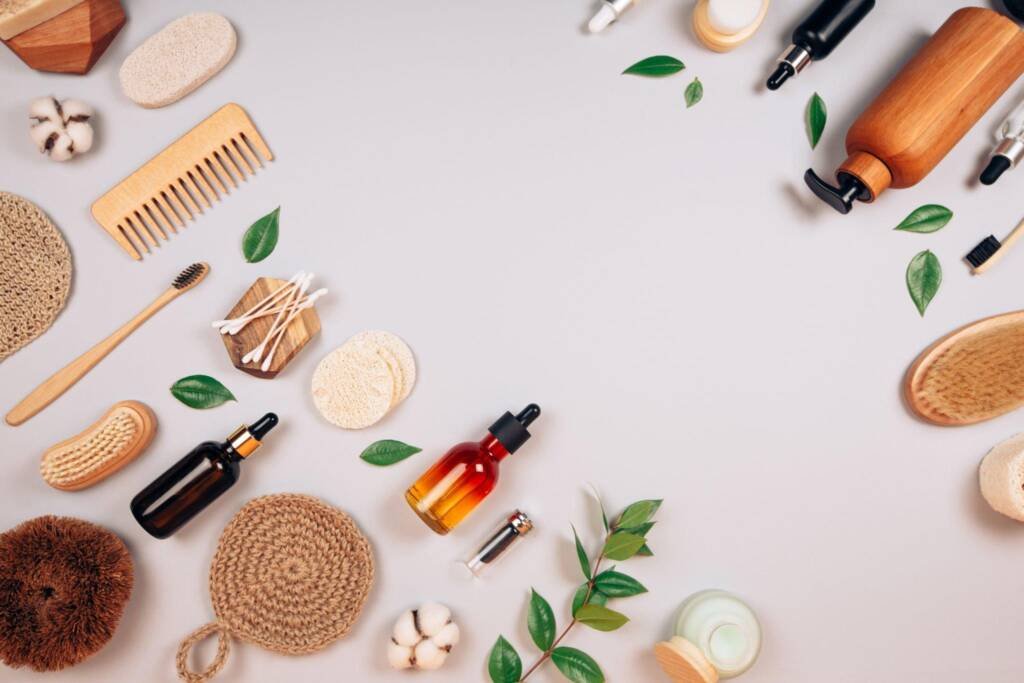
While dry shampoos offer undeniable convenience, their potential impact on both personal health and the environment cannot be overlooked. For those keen on finding safer and healthier alternatives, several options are worth considering. These include natural homemade solutions, eco-friendly products with less harmful ingredients, and hair care practices that minimize reliance on such products. Let’s explore these alternatives in the following sections.
Homemade Solutions.
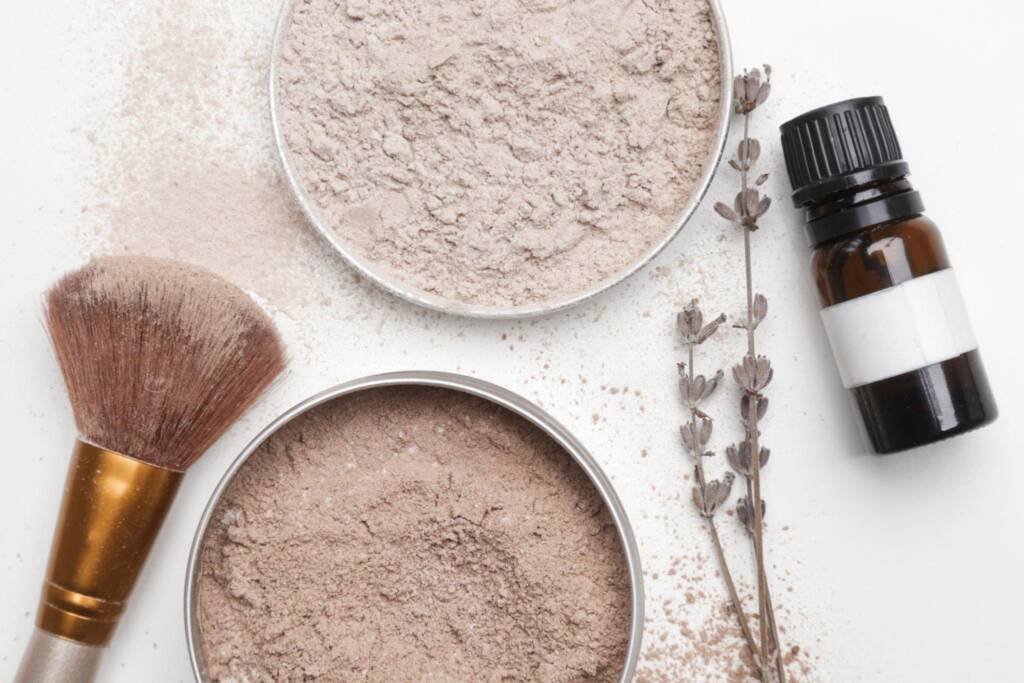
For those looking for a more natural approach, several homemade solutions can be used as alternatives to dry shampoos. These include baking soda and arrowroot powder mixtures, which absorb excess oil from the scalp while gently cleansing and refreshing the hair. Cornstarch is another popular ingredient often used in homemade dry shampoo products.
Natural oils like jojoba, argan, and coconut can also be used to refresh the scalp and hair. These oils penetrate the hair shafts, adding moisture while absorbing excess oil from the scalp.
Eco-Friendly Hair Care Products.
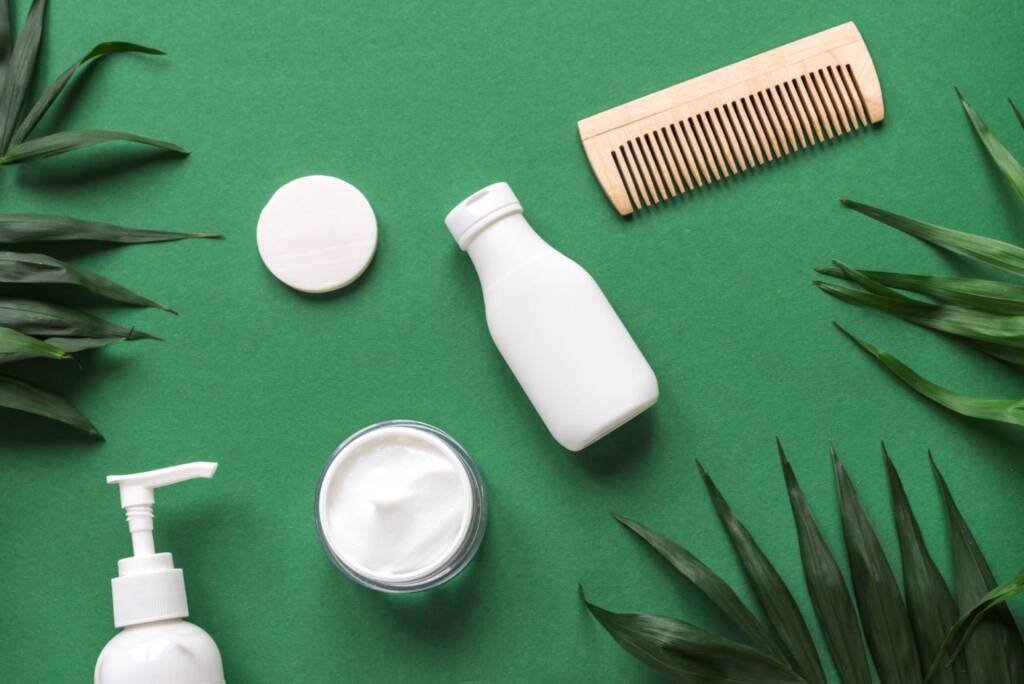
There are plenty of eco-friendly alternatives on the market for those who prefer to use commercially available products instead of homemade solutions. Companies like Ecoco, EcoStyler, and Shea Moisture offer a range of products that are formulated with natural ingredients and free from chemicals and preservatives. In addition, many companies now provide dry shampoos in recyclable cans or containers, thus minimizing their environmental impact.
Minimizing Dry Shampoo Use.
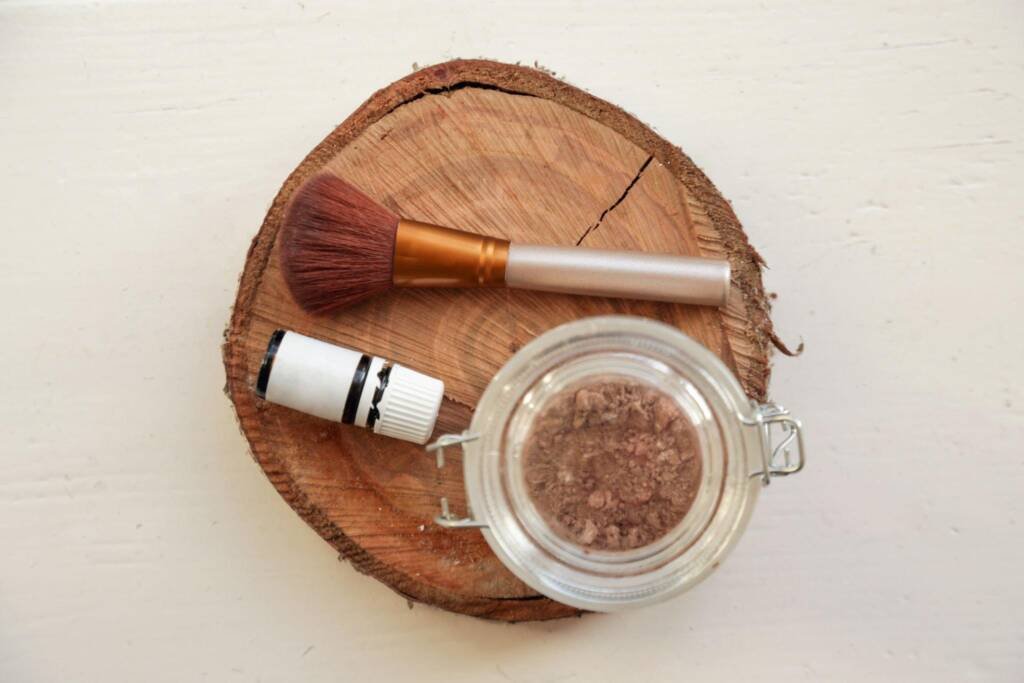
Ultimately, the most sustainable solution to using dry shampoos is minimizing their use as much as possible. This can be achieved by switching to a less frequent washing routine and relying more on natural oils and homemade solutions to refresh the scalp and hair. It is also recommended to choose products with fewer chemicals and preservatives and properly dispose of aerosol cans by completely emptying them before recycling. With these practices, it is possible to enjoy the benefits of dry shampoos without compromising one’s health or the environment.
Conclusion
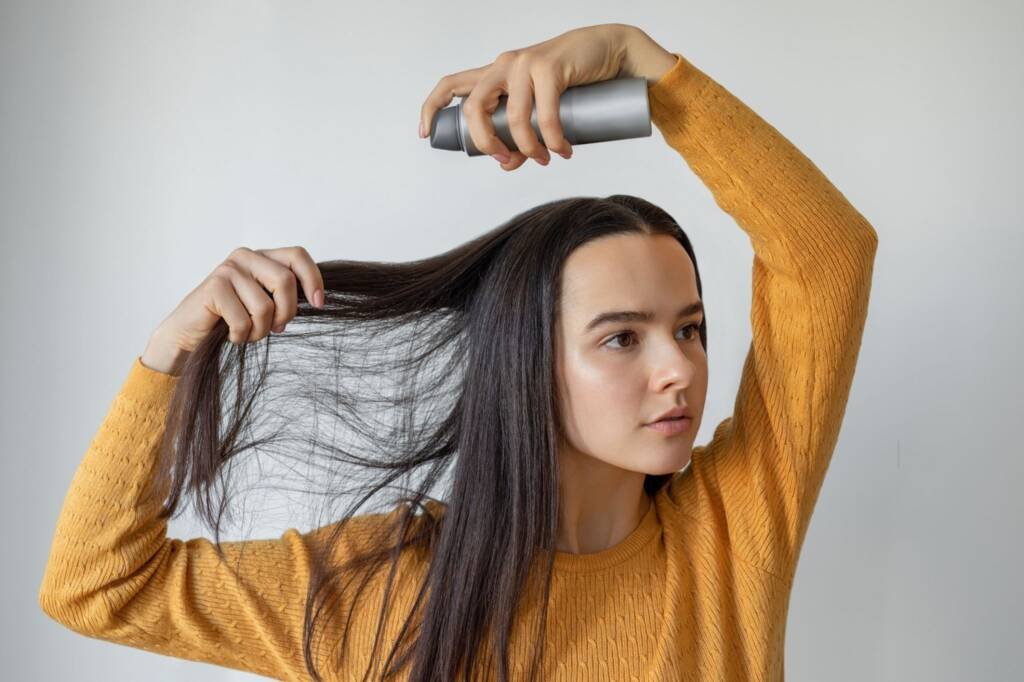
In conclusion, while dry shampoos offer undeniable convenience, they come with their share of potential health concerns and environmental costs. These include skin and hair damage due to overuse and the contribution to air pollution and plastic waste. Alternatives such as homemade solutions, eco-friendly products, and reducing dry shampoo use can help mitigate these concerns. It is essential to understand the implications of these products and make informed choices that prioritize both personal health and environmental sustainability.
References and Further Reading.
- Patel, S., et al. (2019). The Truth About Dry Shampoo: Is It Harming Your Hair? Healthline. Link
- Johnson, L. (2020). The Environmental Impact of Dry Shampoo. Eco Warrior Princess. Link
- Martin, L. (2018). Dermatologists Weigh In on the Benefits and Risks of Dry Shampoo. Good Housekeeping. Link
- Smith, T. (2021). DIY Dry Shampoo Alternatives: Pros, Cons, and How to Make. Healthline. Link
- Eco-Friendly Hair Care Products. Green Choices. Link
- Minimizing Dry Shampoo Use: A Guide. Earth Easy. Link





